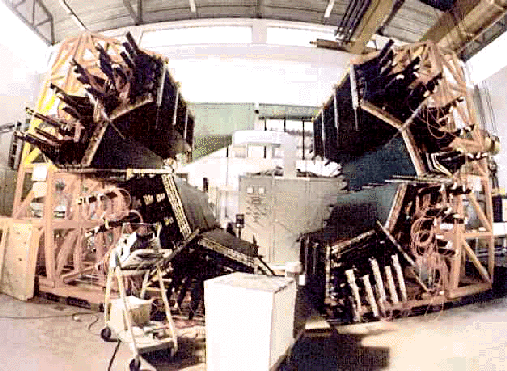
The FENICE experimental setup with its detectors during assembly.

The experiment, a collaboration between the University and INFN Sections of Cagliari, Ferrara, Padua, Rome, Turin, Trieste and the Frascati National Laboratory, explored the energy range between 1.8 and 3.1 GeV. Preliminary data have already been published and the analysis will be completed within 1995.
The experimental setup, installed on one of the interaction straight sections of ADONE, had an octagonal cross section and consisted of a central streamer tube detector to measure the direction of charged particles coming from the electron-positron interactions, a layer of scintillation counters for neutron detection and, externally, a layer of iron plates interleaved with planes of track detectors and scintillation counters where the antineutrons are detected through their annihilations.
It appears that the ratio between neutron and proton form factors in the time-like region is equal or larger than 1 in the explored energy range. Other interesting results from FENICE concern a new measurement of the J/y branching ratio in neutron + antineutron and of the multihadronic electron/positron annihilation cross section close to the neutron/antineutron threshold.
